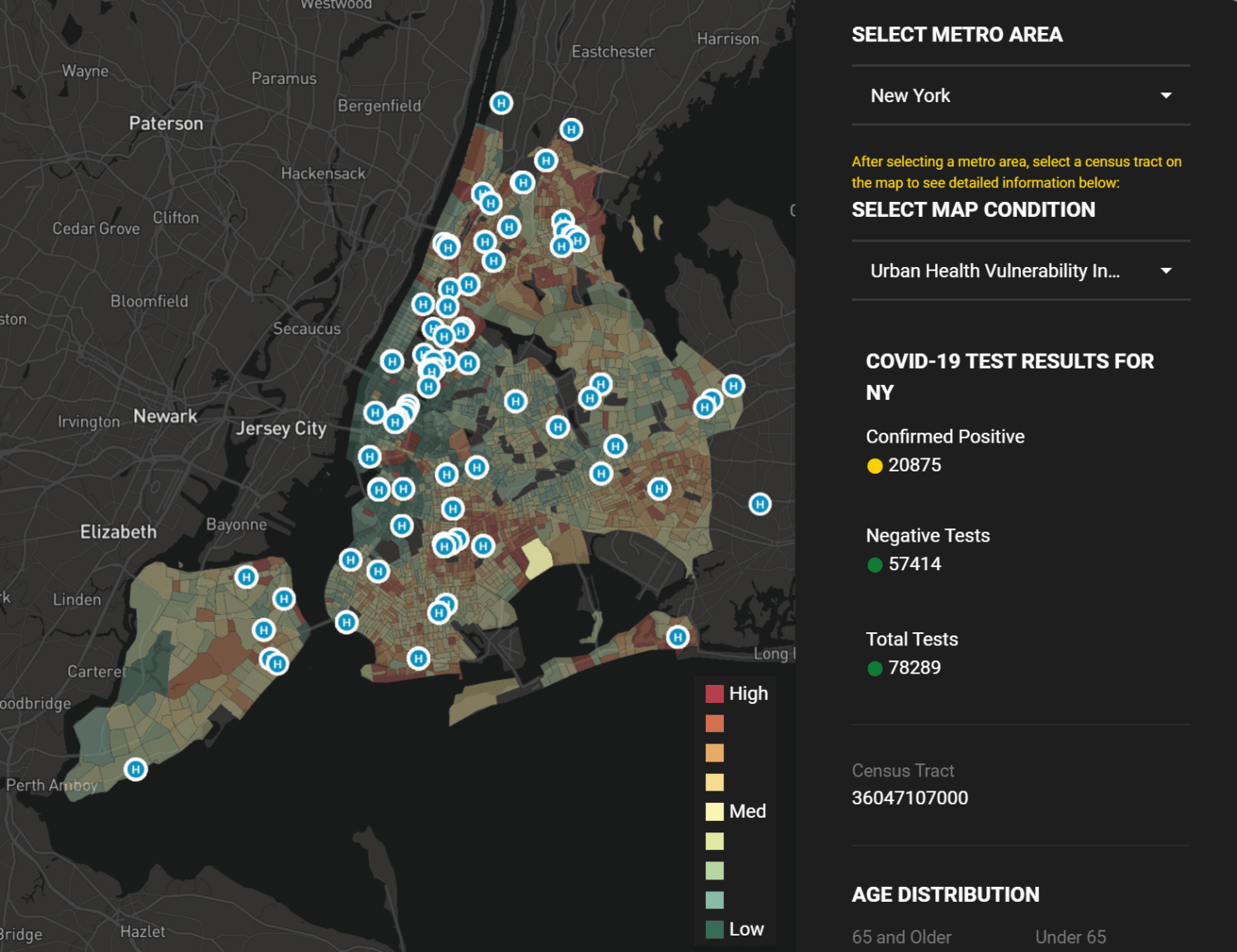
What You Should Know:
– RS21 has developed the Urban Health Vulnerability Index (UHVI) to help local governments and health planners identify urban populations at high risk for COVID-19, including older adults and people with serious medical conditions, such as heart disease, diabetes, and lung disease.
– The UHVI tool uncovers which parts of our communities could be most affected by a COVID-19 outbreak and allows local governments to anticipate where resources may be needed the most.
Data science and visualization company RS21 has created a data analytics website to help address the challenges of COVID-19. The Urban Health Vulnerability Index (UHVI) identifies urban populations at high risk for COVID-19, including older adults and people with serious medical conditions. The public health app is intended to support mid- to long-term planning in the face of health, economic and social disruptions.
The UHVI quickly and clearly communicates information in a map-type interface, making it easy to use by decision-makers, analysts and citizens. Datasets come from the Centers for Disease Control, the US Census, COVID-19 cases, healthcare facilities and other disparate data sources.
Urban Health Vulnerability Index Coverage Areas
The UHVI originally included metro areas in New Mexico where the company is headquartered. It now shows data for the following cities:
Albuquerque, NM
Aurora, CO
Atlanta, GA
Chicago, IL
Colorado Springs, CO
Denver, CO
Las Cruces, NM
New Orleans, LA
New York, NY
Phoenix, AZ
Santa Fe, NM
Washington, D.C.
UHVI Methodology:
The UHVI measures the overall chronic disease burden of a census tract. Chronic conditions used calculate the UHVI include: asthma, COPD, diabetes, cancer, smoking, coronary heart disease, hypertension, stroke, kidney disease, and old age (>= 65 years). For each state we rank census tracts by the prevalence of each chronic condition. We then sum these condition ranks for each census tract to get an aggregate score. This aggregate score is then used to rank each tract within the state producing the final UHVI.

